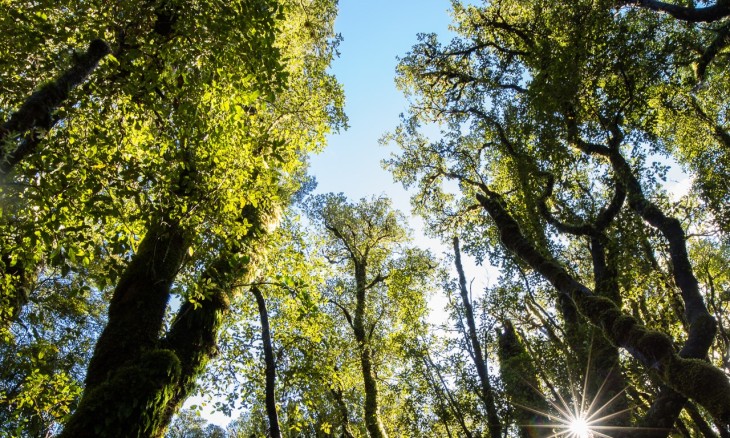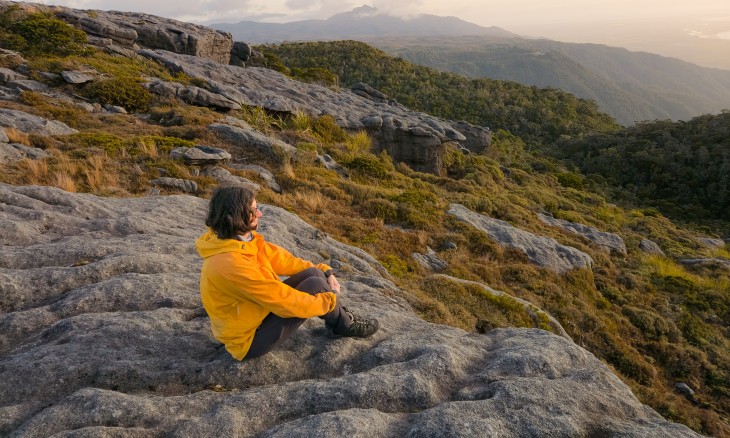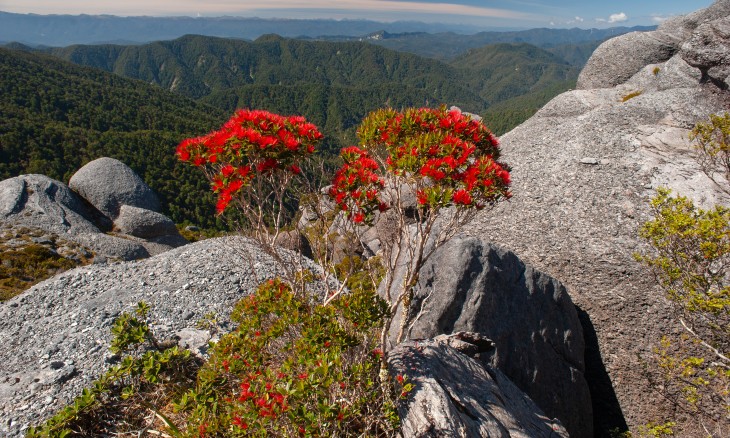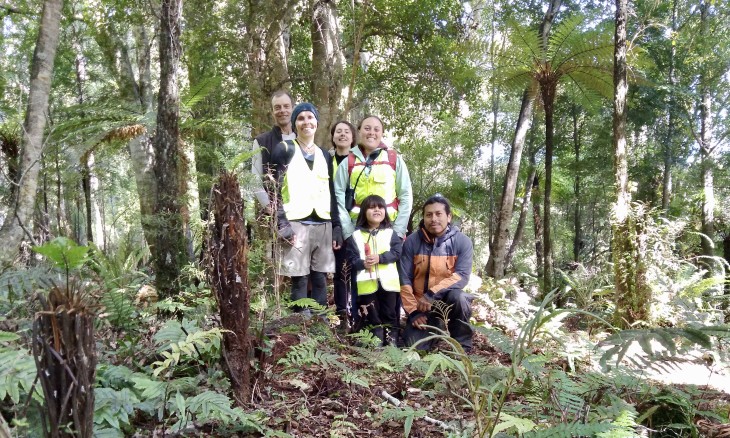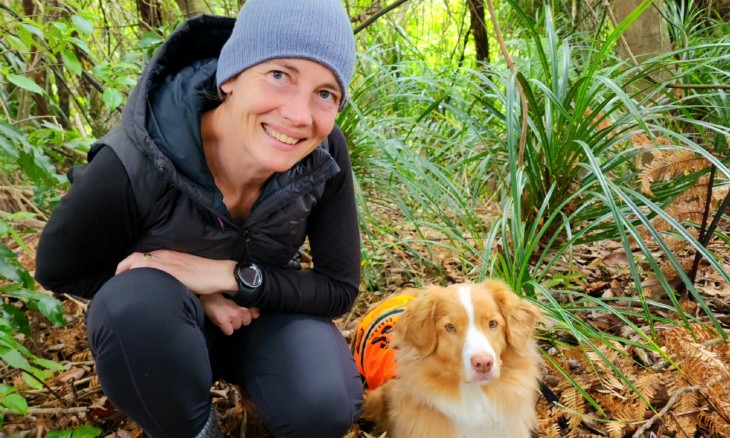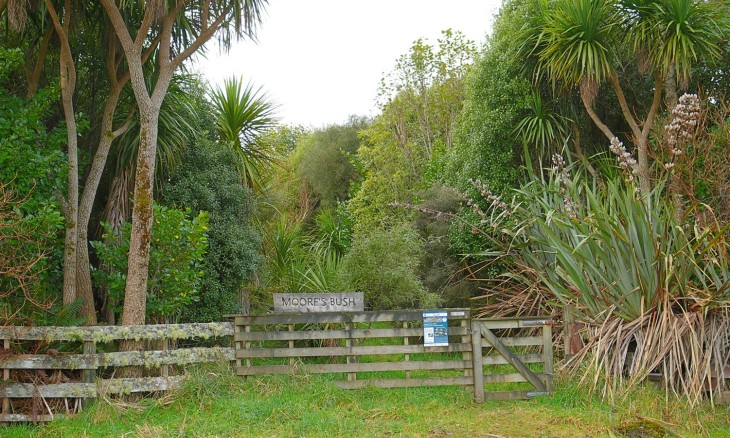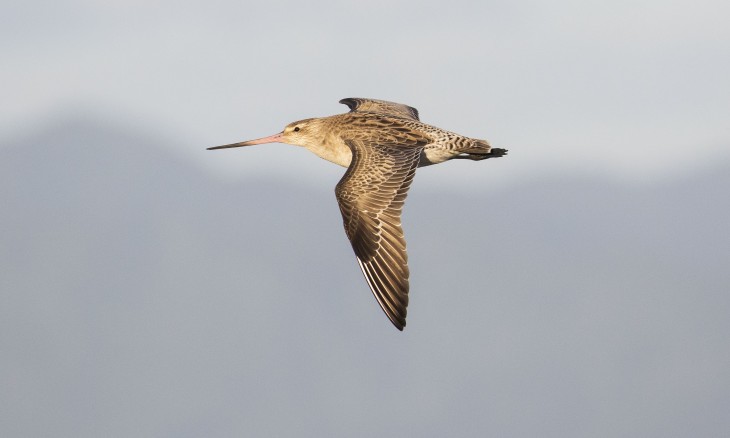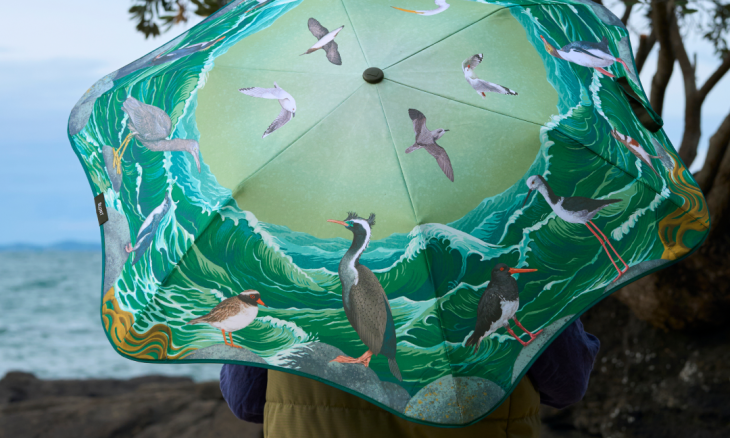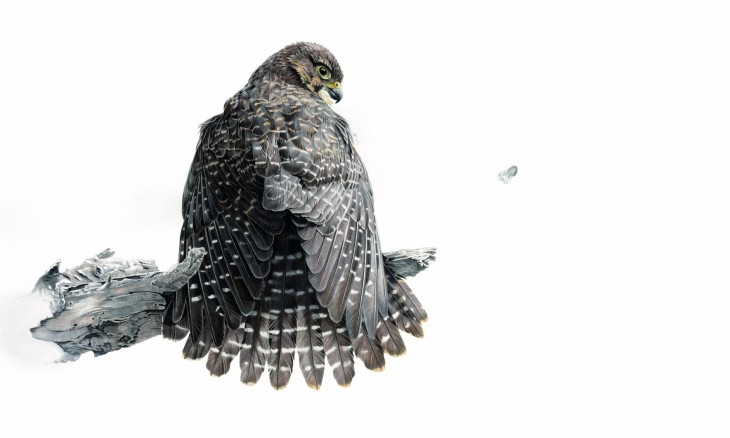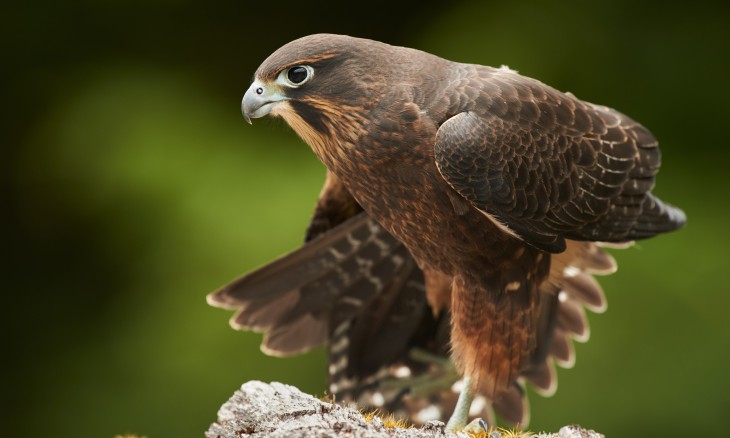Moore's Bush is nestled in the beautiful Leith Valley, just a 10-minute drive from Dunedin City.
This 4-hectare nature reserve has been restored from a dairy farm to native bush. Wildlife is abundant in this small forest, with native birds including kererū, tūī and korimako (bellbirds) in the canopy and freshwater fish, crayfish and invertebrates in the waters of the Leith Stream that runs through it.
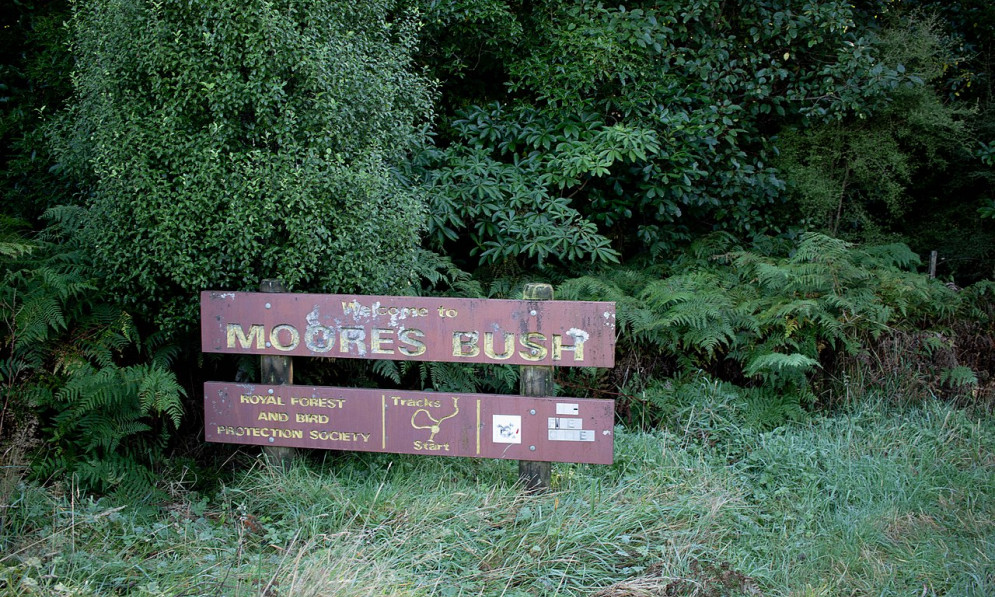
The entrance to Moore's Bush in Dunedin. Photo by Kimberley Collins (CC-BY).
History
From dairy farm to nature reserve
Moore's Bush Reserve is an example of successful ecological restoration. In 1945, Percy and Ellie Moore purchased the site, then a dairy farm flanked by a fragment of native bush, and began restoring this vegetation to its former glory of podocarp-hardwood forest, which was once predominant in the Leith Valley.
When Percy Moore passed away in 1974 the site was bequeathed to Forest & Bird's Dunedin branch, which has owned and managed it ever since. By then, the native bush planted by the Moores covered much of the area. Members of the Dunedin Branch continued reafforesting the land, which is now a lovely 30+ year old regenerated native forest that provides habitat to brown creepers, fantails, grey warblers and other native birds. The reserve also boasts a few centennial trees.
In the 1990s, it was deemed logical to manage both Moore's Bush and the adjacent Department of Conservation Scenic Reserve, a 2 hectare crown land section, as one unit. An informal arrangement between the two parties exists, with Forest & Bird nominally managing both areas.
Securing the reserve boundaries
In 2013, Moore's Bush was partly re-fenced to secure the reserve boundaries against wandering stock from nearby farms. A contractor was hired by Forest & Bird to build a new fence on the northern edge of the reserve and design an effective flood-gate across the Leith Stream. Fencing was achieved thanks to the financial support of the Marjorie Barclay Trust.
DOC made their own arrangements to fence the western edge of Moore's Bush and the boundaries of the Scenic Reserve.
The old fence was cleared of overgrown vegetation and still stands today along the neighbouring farm and Thompson Road.
Flora and fauna
Moore's Bush is home to a range of native species. This includes birds, plants, freshwater fish, crayfish, and invertebrates, plus insects, and fungi. For a full list of species observed at Moore's Bush, please check our iNaturalist NZ project.
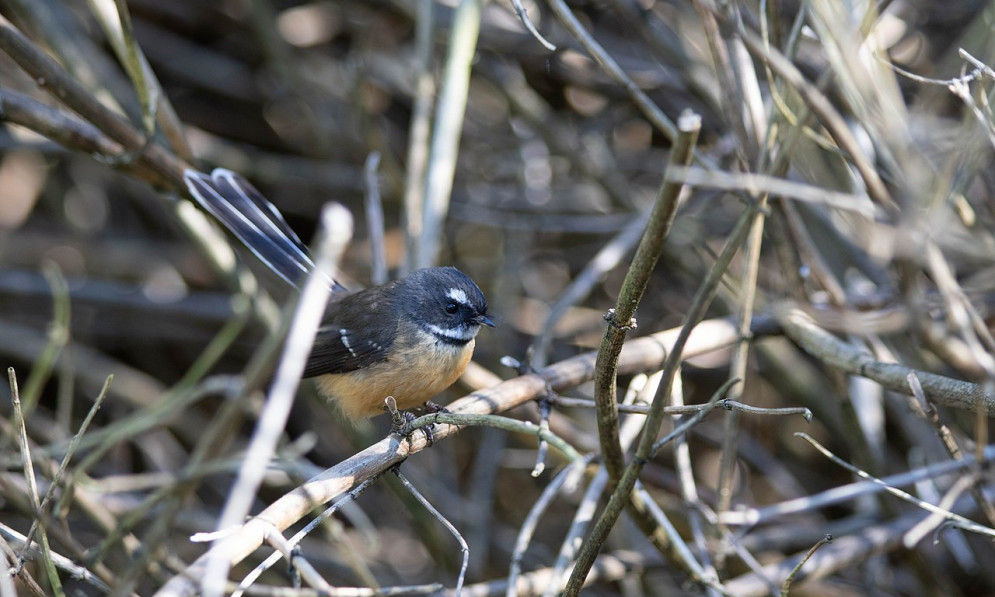
A piwakawaka (fantail) at Moore's Bush. Photo by Kimberley Collins (CC-BY).
Birds
A range of native birds can be found at Moore's Bush, including korimako (bellbirds), tūī, piwakawaka (fantail), riroriro (grey warbler), kererū (wood pigeon), miromiro (South Island tomtit), pīpipi (brown creepers), and pīpīwharauroa (shining cuckoo). A number of introduced species, including the common Eastern rosella, are also found within the reserve. Kākāriki (parakeets) and kakaruwai (South Island robins) have been spotted nearby.
Freshwater fish and invertebrates
The Leith Stream runs through the Reserve and is home to a range of aquatic species including koura (freshwater crayfish) and tuna (eels).
Plants
The forest is composed of podocarp conifers and broad-leaved hardwood trees, many of which were planted by the Dunedin Branch.
Native plant species that occur in the reserve include māhoe, horopito, tarata and emergent pōkākā, tōtara, miro, pāhautea, kahikatea, mataī, pittosporums, coprosmas, broadleaf, makomako (wineberry), kōtukutuku (fuschia), and rimu. One rimu specimen is at least 800 years old.
Conservation work
Predator control
For several years from 2013, a pest control programme was managed within the area, run by Craig Pelvin and other Forest & Bird volunteers. It regularly captured mustelids and possums, amongst other pests.
Once predator numbers were down to a regular minimum, traps were uplifted and moved to other Forest & Bird conservation areas within Dunedin.
Planting and weeding
Overall the native trees planted on the reserve are growing well and becoming a healthy forest. For the future, our main task is to finish planting the remaining treeless areas and ensure these plantings survive by clearing them of smothering grass and invasive introduced weeds, primarily blackberry and broom.
The main plantings are of podocarps, pittosporums, coprosmas, broadleaf, wineberry, and fuschia.
Fence and track maintenance
The reserve fence is maintained to prevent damaging stock incursions and the flood-gate systematically checked after heavy rain events. Hiking tracks are kept clear of overgrown vegetation.
Visiting Moore's Bush
At the North end of George St, turn left into Malvern St and continue up the valley into Leith Valley Road for several km. Then turn into Thompson Road. You can view directions on the map below under 'tracks'.
The reserve entrance, a stile next to a gate, is 50 metres up.
Tracks
There is an easy 15-minute loop track that joins a longer track. Expect to walk across the reserve in about 30 minutes.
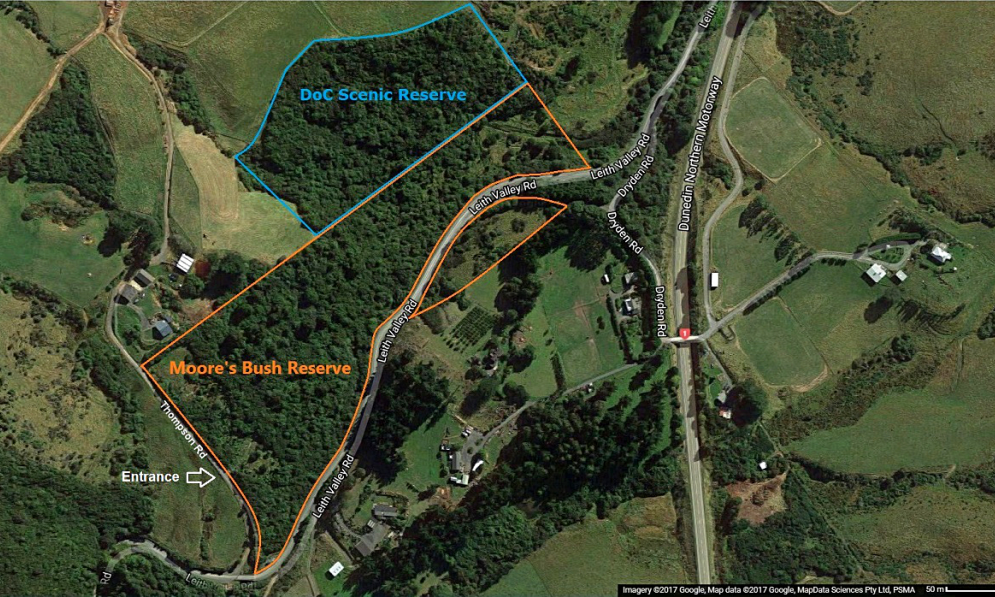
Sub-committee
The Moore's Bush Reserve sub-committee is composed of Francie Beggs, Beatrice Lee and Kimberley Collins.
What can you do
An extra pair of hands is always very welcome and volunteers have greatly contributed to making Moore's Bush Reserve lush and beautiful.
We have regular working bees that contribute to the ongoing restoration of Moore's Bush. These usually involve removing exotic weeds (such as blackberry and broom), maintaining tracks and fences, and planting trees.
If you would like to join us for upcoming working bees at Moore's Bush, please subscribe for email updates or check our events page to keep informed about upcoming volunteer opportunities in the Dunedin area.
If you would like to organise a working bee for your group or workplace at a time that suits you, please get in touch with the Dunedin branch (dunedin.branch@forestandbird.org.nz).

